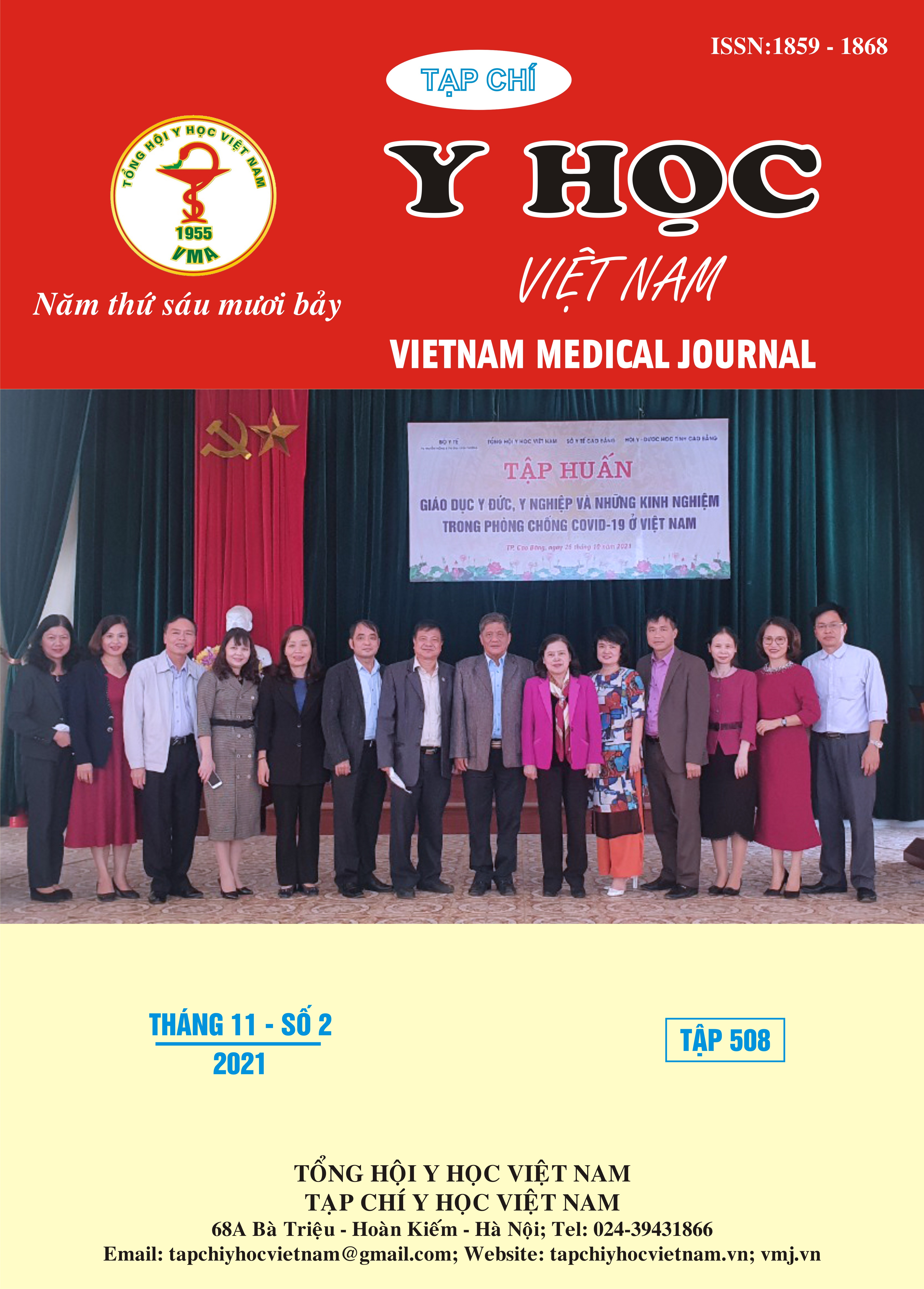IN-VITRO EFFICACY OF ANTIBIOTIC COMBINATION ON THE CARBAPENEM-RESISTANT GRAM-NEGATIVE BACTERIA
Main Article Content
Abstract
Background: According to the World Health Organization, Acinetobacter baumannii, Pseudomonas aeruginosa, and Klebsiella pneumoniae carbapenem - resistance (APK-CR) are the most dangerous bacteria. The new antibiotic development should be prioritized for APK-CR because of their antibiotic resistance seriously. Objective: Evaluate the resistance of APK and the effectiveness of in vitro antibiotic combination of meropenem (ME) - colistin (COL) and meropenem - ciprofloxacin (CIP) to these bacteria strains. Methods: Descriptive and analytical cross sectional study. APK-CR strains were collected at University Medical Center in Ho Chi Minh City from December 2020 to June 2021. Results: There were 151 APK-CR strains (51 A. baumannii, 50 P. aeruginosa and 50 K. pneumoniae). The MICs of ME and CIP on APK-CR strains were both high (accounting for 92-100%); 6% of P. aeruginosa and 10% of K. pneumoniae were MIC resistant to COL. The combination of ME-COL gave high synergistic and additive effectiveness on A. baumannii at the rate of 58.8% and 41.2%, while P. aeruginosa showed the lower rate of 32% and 60%, K. pneumoniae was at the rate of 20% and 60%. The combination of ME-CIP gave high synergistic and additive effectiveness on K. pneumoniae at the rate of 42% and 44%, while A. baumannii showed the lower rate of 33.3% and 45.1%, P. aeruginosa was at the rate of 30% and 60%. Conclusion: APK-CR resists to ME and CIP with a very high rate. The antibiotic combination in vitro of ME-COL and ME-CIP on APK-CR has the synergistic and additive effectiveness.
Article Details
Keywords
combination antibiotic, APK-CR (A. baumannii - P. aeruginosa – K. pneumoniae carbapenem resistance)
References
2. Lương Hồng Loan, Huỳnh Minh Tuấn (2020), "Trực khuẩn Gram âm tiết ESBL, AMPC, carbapenemase và phổ đề kháng kháng sinh tại Bệnh viện Đại học Y Dược TP. Hồ Chí Minh", Y học Tp Hồ Chí Minh, 24 (2), tr. 223-225.
3. Cao Minh Nga, Lê Thị Ánh Phúc Nhi và cộng sự (2014), "Sự đề kháng kháng sinh của vi khuẩn gây bệnh thường gặp tại Bệnh viện Đại học Y Dược 6 tháng đầu năm 2011-2012-2013", Y học Thành phố Hồ Chí Minh, 18 (1), tr. 307-309.
4. Cao Minh Nga, Nguyễn Thanh Bảo, Vũ Thị Kim Cương (2008), "Nhiễm khuẩn do Acinetobacter và tính kháng thuốc ", Y học Thành phố Hồ Chí Minh, 12 (1), tr. 188-193.
5. Agency European Medicines (2017), "Antimicrobial resistance", Retrieved from https://www.ema. europa.eu/en/human-regulatory/ overview/public-health-threats/ antimicrobial-resistance
6. Clinical and Laboratory Standards Institute (2020), Performance Standards for Antimicrobial Susceptibility Testing, M100, 30th ed, pp. 33-49, 174-177.
7. Tacconelli E, Magrini N, et al. (2017), "Global priority list of antibiotic-resistant bacteria to guide research, discovery, and development of new antibiotics", World Health Organization, 27, pp. 318-327.


